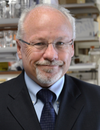08:00 | Conference Registration, Morning Coffee and Pastries in the Exhibit Hall |
|
Session Title: Conference Opening Plenary Session |
| |
|
Conference Chairperson: Professor Albert Folch, Professor of Bioengineering, University of Washington |
| |
09:00 |  | Keynote Presentation New Flow-Cytometry Technologies: From Rare-Cell Isolation to the Analysis of Single Extracellular Vesicles and Particles
Daniel Chiu, A. Bruce Montgomery Professor of Chemistry, University of Washington, United States of America
This presentation will describe two flow-based technologies we developed for the analysis of single rare cells and individual extracellular vesicles and particles. The first flow platform is a rare-cell isolation instrument, which is capable of operating in a rapid sequential sorting mode for isolating single rare cells with exceptionally high sensitivity and purity. The second flow instrument is a digital flow cytometer, capable of high-sensitivity analysis of individual extracellular vesicles and particles. I will outline the workings of these two new flow cytometry platforms, describe their performance, and discuss the clinical questions we are addressing with these next-generation technologies. |
|
09:30 |  | Keynote Presentation Functional Flow Cytometry with Lab on a Particle Technologies
Dino Di Carlo, Armond and Elena Hairapetian Chair in Engineering and Medicine, Professor and Vice Chair of Bioengineering, University of California-Los Angeles, United States of America
The ultimate limits of measurement in biology are the “quantum” units that convey information, e.g. single nucleic acids, proteins, and cells. Microfluidics has emerged as a powerful tool to compartmentalize single cells and molecules into sub-nanoliter droplets as individual bioreactors to enable sensitive detection and analysis down to this quantum limit. However, the current systems for quantum assays have not been widely adopted, partly due to the requirement of specialized instruments and microfluidic chips to generate uniform droplets and perform adequate manipulations. I will discuss the platforms we are developing to perform quantum assays using standard flow cytometers and fluorescence activated cell sorters. “Lab on a particle” technology enables functional screening of T cell receptors based on the cytokine secretion of single T cells, the selection of colonies of yeast or bacteria based on growth and the production of high value bio-products, and the development of directed evolution workflows for protein biosensors. |
|
10:00 |  | Keynote Presentation Automated Flow Cytometric Analysis Compatible Microphysiological Systems
Shuichi Takayama, Professor, Georgia Research Alliance Eminent Scholar, and Price Gilbert, Jr. Chair in Regenerative Engineering and Medicine Wallace H. Coulter Department of Biomedical Engineering, Georgia Institute of Technology & Emory University School of Medicine, United States of America
Many organs-on-a-chip and microphysiological systems (MPS) are too small to allow recovery of sufficient cells for convenient flow cytometric analysis. This presentation will describe transitioning of microfluidic organs-on-a-chip system to mesoscale systems compatible with automated flow cytometry. The presentation will describe some of the underlying engineering technologies along with accompanying biomedical applications of the technologies. Additionally, this presentation will discuss some of the standardization opportunities and challenges for these systems with example applications to lung diseases. |
|
10:30 | Morning Coffee Break and Networking in the Exhibit Hall |
11:00 |  | Keynote Presentation A Miniaturized Intestine-on-Chip with Crypts, Microbes and Mucus
Nancy Allbritton, Frank and Julie Jungers Dean of the College of Engineering and Professor of Bioengineering, University of Washington in Seattle, United States of America
A 3D polarized epithelium using primary human gastrointestinal stem cells recapitulates gastrointestinal epithelial architecture and physiology. The intestine-on-chip supports chemical and oxygen gradients, a stem cell niche, differentiated cell zone, and mucus layer. An anaerobic luminal compartment permits co-culture of anaerobic intestinal bacteria. This in vitro human colon crypt array replicates the architecture, luminal accessibility, tissue polarity, cell migration, cell types and cellular responses of in vivo intestinal crypts. The microdevice possesses one hundred crypts providing exquisite control of the microenvironment for the investigation of organ-level physiology and disease. This bioanalytical platform is envisioned as a next-generation system for assay of microbiome-behavior, drug-delivery, and toxin-interactions with the intestinal epithelia. |
|
11:30 |  | Keynote Presentation Detection and Identification of Single Molecules using Nanoscale Electrophoresis and Resistive Pulse Sensing
Steve Soper, Foundation Distinguished Professor, Director, Center of BioModular Multi-Scale System for Precision Medicine, The University of Kansas, United States of America
We are generating a label-free single-molecule sensor that can detect and identify various molecules (small – ribonucleotides, deoxynucleotides, peptides – and large molecules – oligonucleotides, proteins) using a combination of nanoscale electrophoresis and resistive pulse sensing. The sensing technology employs a nanochannel to read the identity of individual molecules from their molecular-dependent electrophoretic mobility deduced from the travel of the molecule through a 2-dimensional (2D) nanochannel (~50 nm in width and depth; 5 – 10 µm in length) fabricated in a thermoplastic via nano-injection molding. The mold insert used for injection molding is made from a Si master that has undergone photolithography to build microstructures and focused ion beam milling to generate the nanostructures, which is used to produce resin stamps that serve as the mold insert. The 2D nanochannel is flanked on either end with an in-plane nanopore (effective diameter <10 nm) that can detect single molecules using resistive pulse sensing in a label free fashion. In this presentation, we will present our results using nanoscale electrophoresis to deduce the identity of deoxynucleotides, ribonucleotides, and peptides. The effect of material (type of plastic), scaling effects, and surface modifications of the 2D nanochannel on the performance of nanoscale electrophoresis will be discussed as well. We will also discuss the use of principle component analysis or machine learning to improve the identification accuracy of single molecules from not only their unique electrophoretic mobility, but also the molecular-dependent dwell time (current transient event width) and event amplitude generated from each in-plane pore. We will also discuss unique applications of this sensing platform including single-molecule DNA/RNA sequencing and protein fingerprinting using peptides produced from the solid-phase proteolytic digestion of single protein molecules. |
|
12:00 |  Fluorescence Microfluidic Resistive Pulse Sensing: A Rapidly Emerging Method for Flow Cytometry at the Nanoscale Fluorescence Microfluidic Resistive Pulse Sensing: A Rapidly Emerging Method for Flow Cytometry at the Nanoscale
Jean-Luc Fraikin, CEO, Spectradyne
Nanoparticle-based biotechnologies including virus-mediated cell and gene therapies, lipid nanoparticles (LNPs), and extracellular vesicles (EVs) hold enormous promise as vaccines and therapeutics. These revolutionary technologies derive their potency from payload-carrying particles as small as 20 nanometers in diameter. At this size scale, basic physical properties of the particles directly dictate the efficacy and safety of the overall product and are therefore critical parameters that must be measured to effectively develop and produce products based on these materials. The realization of the potential of these medicines is limited, however, by a lack of practical analytical tools for measuring three key particle properties that critically impact dose and bioavailability: Particle size, concentration, and payload. Despite new developments that stretch the limits of its sensitivity, optical flow cytometry is fundamentally limited in its ability to accurately detect and measure nanoscale particles in heterogeneous samples. Fluorescence Microfluidic Resistive Pulse Sensing (F-MRPS) is rapidly emerging as a powerful alternative to optical flow cytometry that accurately measures nanoparticle concentration, size, and payload in complex samples. F-MRPS combines two orthogonal analytical techniques into a single measurement: A cartridge-based electrical method for counting and sizing particles (MRPS), and simultaneous high sensitivity single-particle fluorescence measurements for quantifying payload. In contrast with purely optical flow cytometry methods, the detection limit of F-MRPS is not limited by light scattering intensity, and measurements of particle size are completely independent of the particle’s optical properties. F-MRPS is therefore uniquely suited to analyzing complex heterogeneous samples and is rapidly being adopted by industrial and academic users for quantification of EVs, virus and LNPs. A technical overview of the F-MRPS technology will be presented, together with measurement examples from key impact areas including virus and gene therapy, extracellular vesicles, lipid nanoparticles (LNPs), and liposomes. The fluorescence sensitivity of F-MRPS is demonstrated with measurements of synthetic particles cross-calibrated to NIST-traceable fluorescence intensity standards.
|
12:30 |  Improvements in Fluorescence Nanoparticle Tracking Analysis Improvements in Fluorescence Nanoparticle Tracking Analysis
Sven Rudolf Kreutel, Chief Executive Officer, Particle Metrix GmbH and CEO, Particle Metrix Inc., USA
|
13:00 | Networking Luncheon in the Exhibit Hall -- Network with the Exhibitors and Engage with Colleagues |
13:30 | View Afternoon Agenda in the Innovations in Microfluidics Track |






